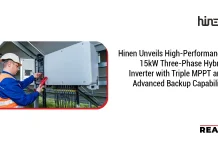Lucid Group, manufacturer of the world’s most advanced electric vehicles, announced a new multi-year supply agreement with Graphite One. The deal marks another strategic step in reinforcing Lucid’s domestic supply chain for critical raw materials, specifically American-sourced natural graphite.
This agreement follows recent partnerships with Syrah Resources and Graphite One, enabling Lucid to increasingly rely on both natural and high-performance synthetic graphite sourced and produced within the United States. These materials will be supplied through directed agreements with Lucid’s battery cell partners to support future vehicle production.
“A supply chain of critical materials within the United States drives our nation’s economy, increases our independence against outside factors or market dynamics, and supports our efforts to reduce the carbon footprint of our vehicles,” said Marc Winterhoff, Interim CEO at Lucid. “These partnerships are another example of our commitment to powering American innovation and manufacturing with localized supply chains.”
Also Read: Tecsys launches TecsysIQ for AI-powered insights in healthcare supply chain
Under the new agreement, Graphite One will provide Lucid and its battery cell suppliers with domestically sourced natural graphite, with production slated to begin in 2028. The material will be extracted from Graphite Creek, located north of Nome, Alaska. This deal builds on a previously announced 2024 partnership, through which Graphite One will also supply synthetic graphite beginning in 2028. That graphite will be produced at the company’s proposed Active Anode Material (AAM) manufacturing facility in Warren, Ohio.
“This agreement complements the deal we struck with Lucid in 2024 – which marked the first synthetic graphite agreement between a U.S. graphite developer and a U.S. EV company,” said Anthony Huston, CEO at Graphite One. “We made history then – and we’re continuing to make history now as we build momentum for our efforts to develop a fully domestic graphite supply chain, to meet market demands and strengthen U.S. industry and national defense.”




